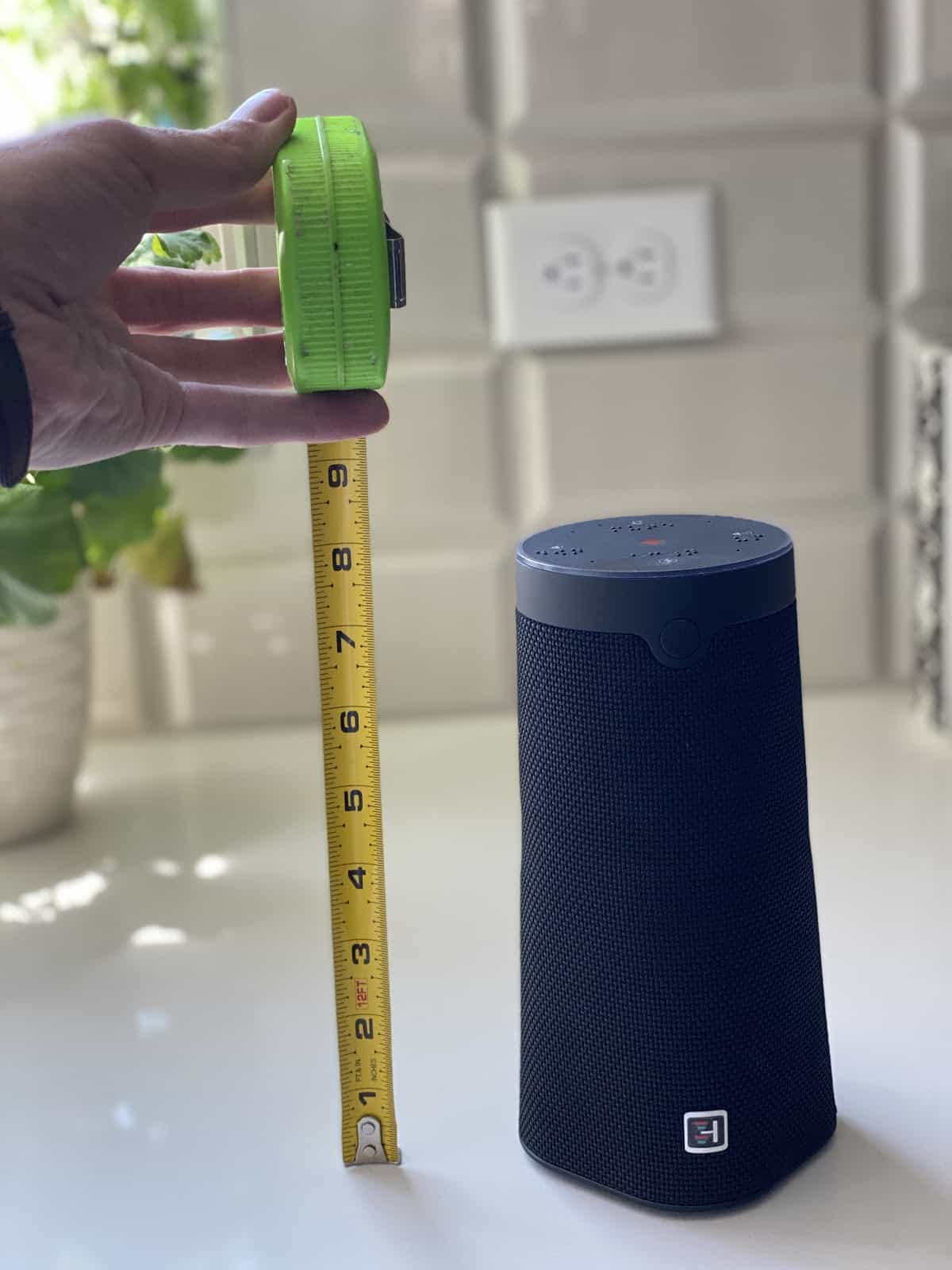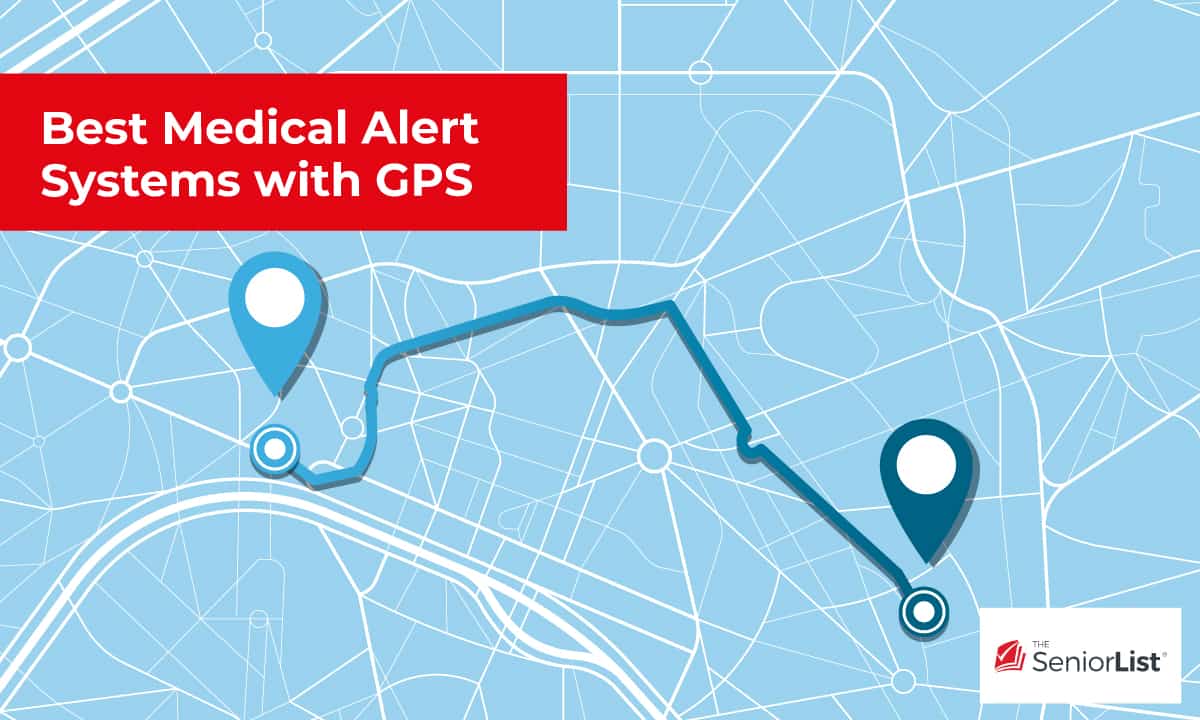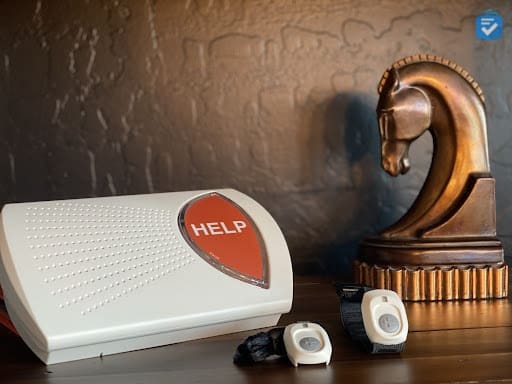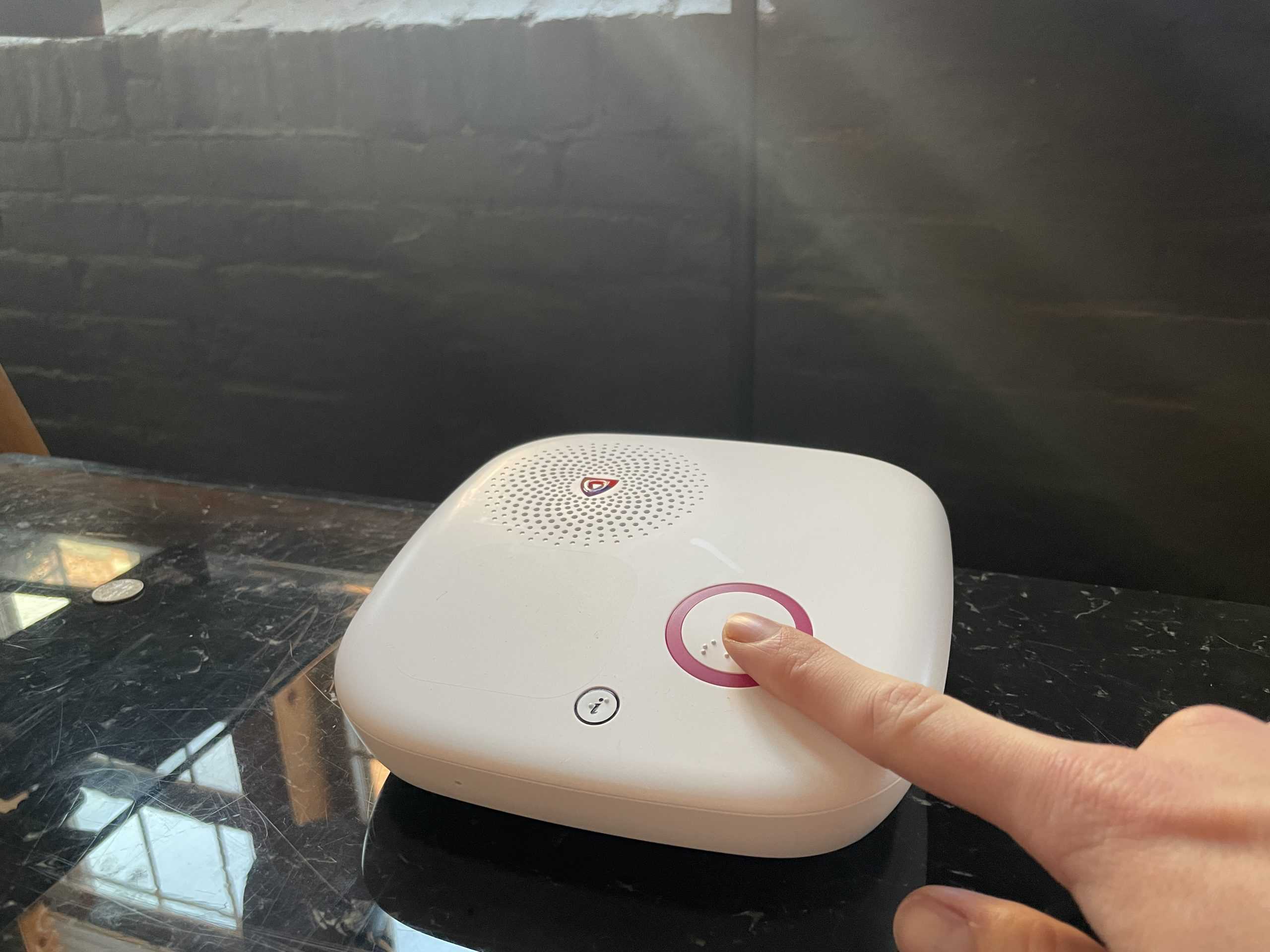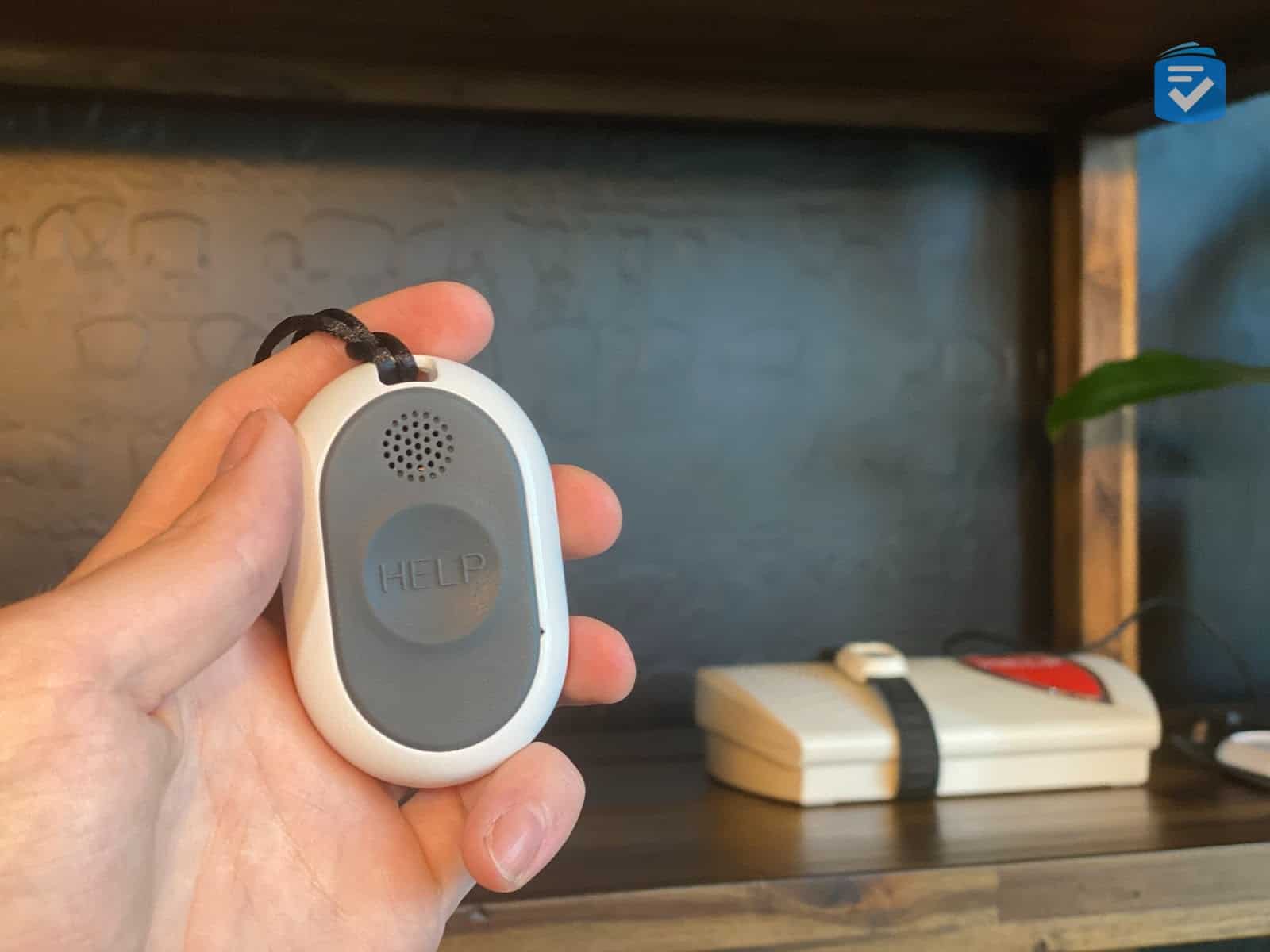The Best Medical Alert Systems With No Monthly Fee, Tested by Caregivers
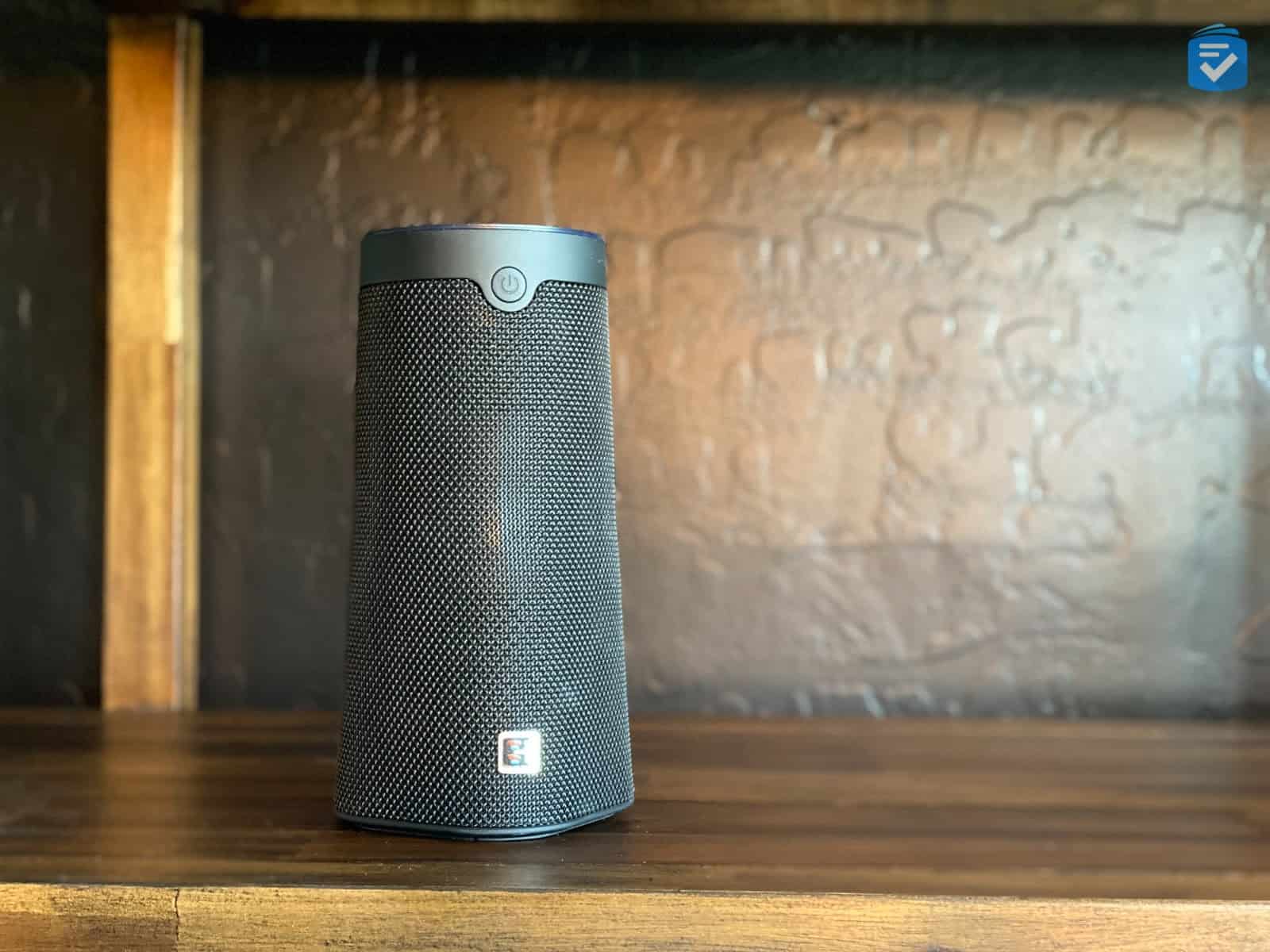
Most medical alert systems cost $20-$30 monthly, with mobile options reaching $45 per month. For budget-conscious seniors, unmonitored medical alert systems offer a worthwhile alternative to traditional systems that can cost upward of $40 monthly. These no-fee devices typically call 911 during emergencies, though they lack access to trained urgent response agents.
While we generally recommend traditional medical alert systems for their professional monitoring capabilities, unmonitored devices provide valuable protection when cost is top of mind. These systems can be especially beneficial for those on tight budgets who still want emergency response capabilities.

The Best Medical Alert Systems With No Monthly Fees
- WellBe Smart Speaker : Best Voice Commands
- Apple Watch SE 3 : Best Smartwatch
- FastHelp : No Smartphone Required
- Silent Beacon 2.0 : Best Budget Option
1. WellBe Smart Speaker - Best Voice Commands

What We Like Most:
- HIPAA-compliant
- Loud speakerphone
- Sophisticated voice commands
- Detailed health-tracking features
Overview
Price: $189 one-time charge
The WellBe Medical Alert Device and Smart Speaker is a Wi-Fi-connected smart speaker designed to help you manage your health more easily. It offers convenient features like medication reminders and prescription refill alerts, and it can even answer your health-related questions. The best part? You don’t need to wear any extra devices for it to work.
How It Works
Think of WellBe as a health-focused smart speaker, similar to Google Nest or Amazon Echo. We tested its ability to record vital signs simply by saying, “OK, WellBe, record my blood pressure as X over Y,” and then easily retrieved those readings later by asking the device.
WellBe also reminded us about our medications according to a programmed schedule and answered health questions without needing an app. It even helped us find nearby pharmacies and suggested generic alternatives for pricier medications. The device also provided weather reports, news updates, and played music through iHeartRadio or Spotify.
Pricing
The $189 cost has no monthly fees, making it cost-effective compared to $40-monthly traditional systems.
Drawbacks
The device cannot help during actual emergencies requiring 911 calls. For urgent response capabilities, you’d need additional WellBe products like their Medical Alert Pendant or Watch.
Our Verdict
The WellBe Smart Speaker serves as an excellent health monitoring addition but lacks emergency response features.
Pros
- Monitoring of health information
- Medication and prescription refill reminders
- Speaker and microphone
- Ability to ask health questions
Cons
- No urgent-response calling
- No GPS
2. Apple Watch SE 3 - Best Smart Watch
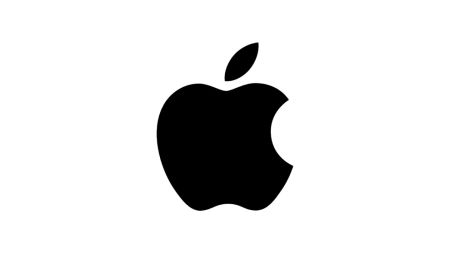
What We Like Most:
- Fall detection
- 18-hour battery life
- Urgent-response button
- Heart-rate and sleep monitoring
Overview
Price: $249 one-time charge
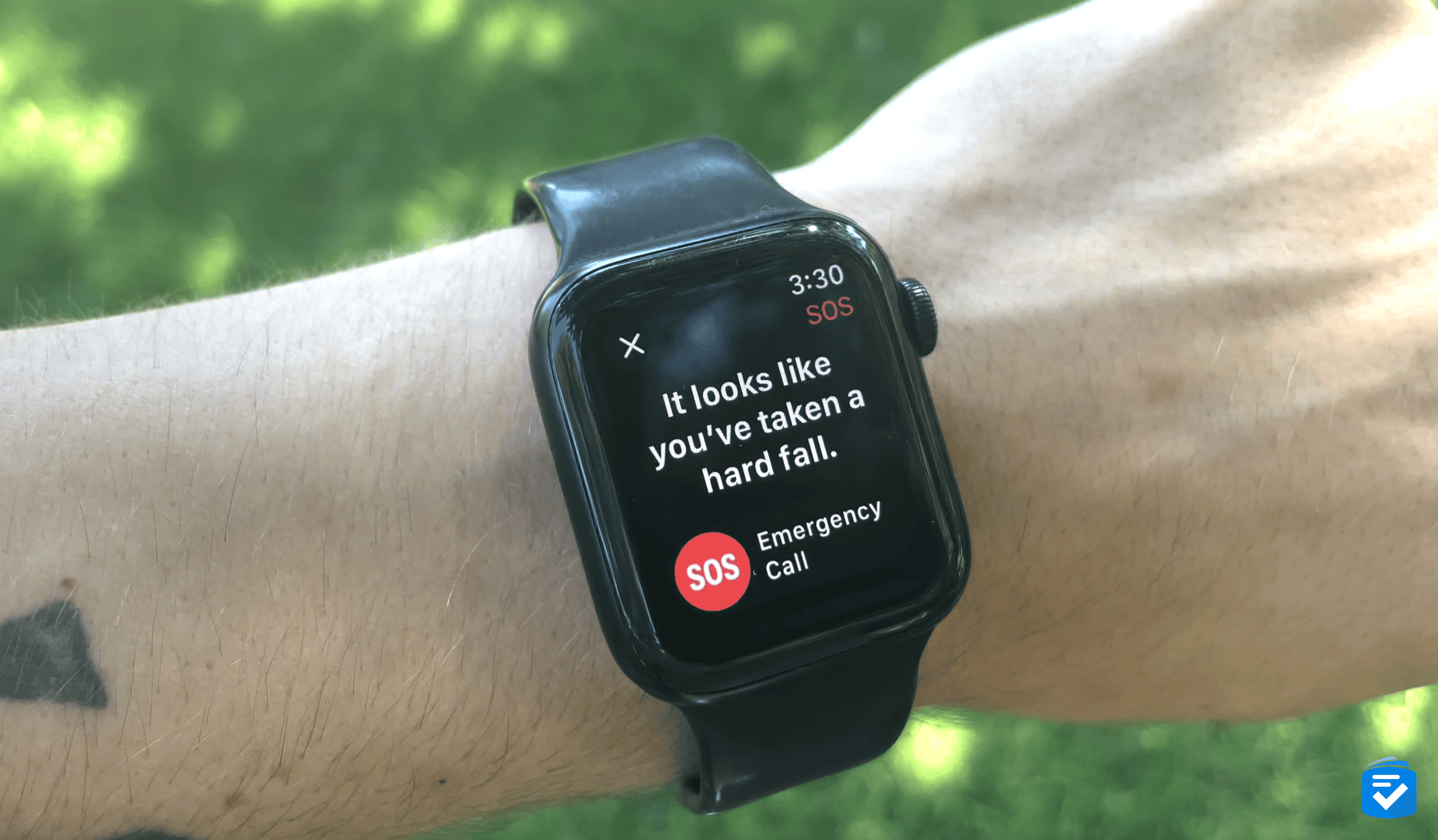
While known for its entertainment features, the Apple Watch SE 3 includes medical alert capabilities like fall detection and urgent-response calling.
>>Read more: Apple Watch vs. Medical Alert Systems
How It Works
The Apple Watch SE 3 combines medical alert features with iPhone capabilities on your wrist. During our test fall, a message immediately appeared asking if we had fallen. We could prevent the 911 call while sending emergency messages with location data to our contacts.
As the only device on this list with fall detection, the Apple Watch SE 3 also offers crash detection, text messaging, heart rate monitoring, sleep tracking, music, and extensive WatchOS app capabilities.
>>Read more: The Best Smartwatches for Seniors
Pricing
Starting at $249, the Apple Watch SE 3 is this list’s most expensive option. Larger sizes, special finishes, or GPS-plus-cellular versions cost more. GPS-and-cellular options require adding the watch to your T-Mobile, Verizon, or AT&T plan, creating monthly fees.
Even GPS-only versions require a nearby iPhone, potentially adding hundreds in costs if you don’t already own one.
Drawbacks
Without a separate cellular plan, the Apple Watch SE 3 can only call for help when your phone is nearby. For users without an iPhone, this means paying an extra charge, one way or the other.
Our Verdict
Combining fall detection, urgent-response capabilities with iMessage, Apple Pay, and numerous apps, the Apple Watch SE 3 is a great alternative to a medical alert system.
>>Read more: The Best Fall Detection Devices
Pros
- Monthly fees not required
- Accurate fall detection
- Urgent-response button
- Charges up to 80 percent in 1.5 hours
Cons
- Requires phone nearby without monthly fees
- Pricey
3. FastHelp - No Smartphone Required
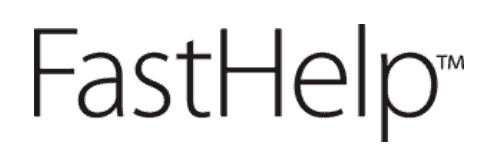
What We Like Most:
- Urgent-response button
- Voluble speakerphone
- Battery lasts several weeks
- No Wi-Fi required

Overview
Price: $149 one-time charge
FastHelp offers a direct line to 911, no monthly fees required.
How It Works
The FastHelp is a portable medical alert button you can carry in your pocket. When you press the red button, it announces, “Calling 911, calling 911,” and you can then explain your emergency directly through the device.
It uses cellular networks to pinpoint your location within cell tower range, though it’s worth noting that mobile phone locations aren’t as precise as landline connections. If you accidentally press the button, you can cancel the call by holding down the small silver button for five seconds.
The FastHelp comes with a belt clip and has a slot for a lanyard (sold separately), but it doesn’t offer fall detection or 24/7 professional monitoring.
Pricing
At $149, FastHelp costs less than the WellBe but $50 more than Silent Beacon, despite offering fewer features and no caregiver app.
Drawbacks
FastHelp only calls 911, not friends and family like Silent Beacon. Additionally, as a pocket device, rather than a wearable, it’s easier to misplace.
Our Verdict
FastHelp works well for those preferring a pocket emergency device over wearables while maintaining 911 access.
Pros
- GPS through cellular triangulation
- Several-week battery life
- No Wi-Fi, Bluetooth, or app requirements
- One-button 911 calling
Cons
- No fall detection
- Can’t contact family or friends
4. Silent Beacon 2.0 - Best Budget Option
What We Like Most:
- $99.99 price tag
- Urgent-response button and GPS
- Six-hour talk time and six-month standby time
- One-year limited warranty
Overview
Price: $99.99 one-time charge
The Silent Beacon pairs with your smartphone to provide quick 911 access and automated messages to loved ones, all worn on your wrist.
How It Works
The Silent Beacon looks like a sleek, circular speakerphone you wear on your wrist, almost like a watch without a face. Just press the big button for two seconds, and it immediately calls 911 while also sending a personalized message to your chosen emergency contacts.
When we tested it, our contact received an email alert, a push notification, and a text message, complete with our GPS location. The side button handles four different things: turning it on, sending “OK” messages to your contacts, requesting monitoring, and checking the device’s status.
Because there aren’t any monthly fees, you can’t connect to a 24/7 monitoring center. Instead, you’ll rely on your emergency contacts or 911 to call you back, rather than having someone stay on the line.
Pricing
For a one-time fee of $99.99, you get email, push, and text alerts sent to one emergency contact. The app also offers password protection and a community feature to keep you updated on local safety.
If you’d like more features, there are optional paid plans ranging from $2.99 to $9.99 per month. These plans can give you up to eight emergency contacts, low-battery alerts, and even 24/7 professional monitoring.
Drawbacks
You’ll need a smartphone nearby for the Silent Beacon to work because it doesn’t have its own cellular or GPS, meaning you’ll still have a monthly cell phone bill.

>>Read more: The Best Senior Phone Plans
Our Verdict
For affordable, wearable emergency access, the Silent Beacon is a great option.
Pros
- Personalized emergency contact
- Push notifications for loved ones
- GPS through phone
- Two-way audio
Cons
- No fall detection
- Extra fees for additional emergency contacts
How Do Unmonitored Medical Alerts Work?
Unmonitored medical alert systems provide emergency help by calling 911 or contacting loved ones. Unlike monitored systems, they don’t connect to professional monitoring centers with trained agents who assess situations and coordinate responses.
The key difference appears in non-emergency situations. If you fall but aren’t injured and your unmonitored system only calls 911, first responders may be required to transport you to the emergency room anyway. Monitored systems allow agents to contact nearby loved ones or caregivers instead, avoiding unnecessary emergency room visits.
Risks of a Medical Alert With No Monthly Fees
Unmonitored medical alert systems carry essential risks. Instead of professional monitoring centers, you connect directly to 911 or chosen contacts. While family, friends, and first responders provide help, monitoring centers offer someone to stay on the line until help arrives. You may be left without assistance if your device calls contacts who don’t answer.
Most unmonitored systems lack fall detection, a feature typically costing $10 monthly with monitored systems. Fall detection automatically sends help without requiring button presses when the device senses a fall.
Always verify that unmonitored systems include GPS and urgent-response features, as not all models offer these capabilities.
Why We Recommend a Monitored Medical Alert System
We recommend monitored systems primarily because they’re safer during emergencies:
Fall detection: During emergencies, you may be unable to speak or push buttons. The best monitored systems sense falls and automatically alert 24/7 monitoring centers.
24/7 professional monitoring: While 911 provides emergency help, monitoring centers offer personalized service, staying on the phone until help arrives and providing both emergency and emotional support.
Urgent-response calling: All monitored systems include urgent-response buttons, which isn’t always guaranteed with unmonitored devices.
Bottom Line
No-monthly-fee medical alerts cost less, provide easy operation, and offer emergency protection. However, they lack dedicated call centers with professional monitoring agents who undergo extensive crisis training and remain on calls until help arrives.
Your decision will ultimately come down to your current living situation. If you have loved ones nearby who can respond to alerts, then an Apple Watch or FastHelp might do the trick. If this is not the case, then a traditional medical alert might be the best option.
Why Trust Us?
At TheSeniorList, our team of caregivers, experts, and healthcare professionals conducted over 5,000 hours of in-depth research and testing to recommend the most reliable brands and devices. In this process, our team:
- Tested 50 medical alert devices from 15 different brands.
- Surveyed 1,250 seniors and caregivers on medical alert system usage.
- Consulted with nurses, EMTs, and caregivers who are experts at caring for older adults.
- Published dozens of videos that demonstrate our medical alert system testing.
- Evaluated verified customer reviews of medical alert companies from the Better Business Bureau.
How We Test Medical Alert Systems
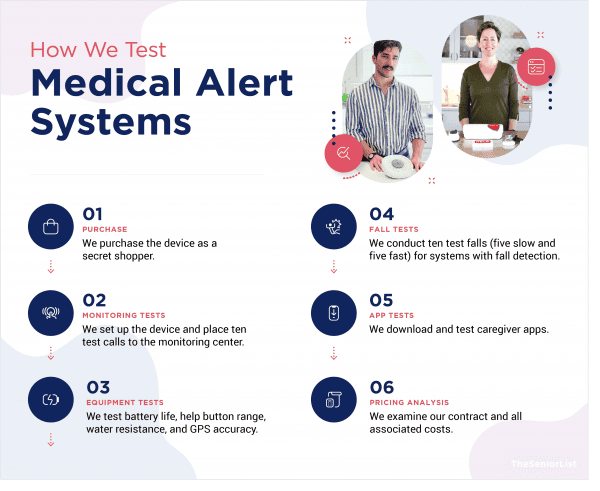
No-fee medical alert systems vary widely in functionality. We evaluated them using these criteria:
Affordability: We sought systems under $250 annually to compete with the cheapest traditional medical alert options.
Comfort: We prioritized small, lightweight devices and systems requiring no buttons, since uncomfortable devices are more likely to be left behind.
Emergency notifications: We looked for systems contacting both 911 and loved ones, since no-fee systems lack trained response agents.
Warranties: Since these systems require equipment purchase rather than leasing, we selected only devices with minimum one-year limited warranties.
Location technology: We ensured devices could be located even if the wearer becomes unresponsive.
Frequently Asked Questions
-
What are unmonitored medical alert systems?
Unmonitored medical alert systems don’t have a 24/7 monitoring staff to take emergency calls. Instead, they’ll connect directly to a 911 operator, who will send EMTs or other help.
-
Is there a medical alert system that calls family?
Unmonitored medical alert systems from WellBe and Aloe Care Health can be tailored to call either 911 or designated family members instead of a trained monitoring center.
-
Are there any free medical alert systems?
No, there are no free medical alert systems. Medicare won’t cover the cost of a medical alert system, but there are some ways to find discounts through AARP or your local Area Agency on Aging.
-
What happens if I accidentally press the emergency button on a no-fee medical alert system?
Most no-fee medical alert systems include a cancel feature to prevent accidental emergency calls. For example, FastHelp allows you to hold the small silver button for five seconds to cancel a call, while the Silent Beacon provides similar cancellation options.


